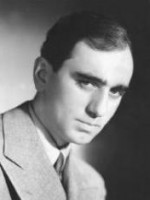Dolores del Río is a Actor Mexicaine born on 3 august 1904 at Durango (Mexique)
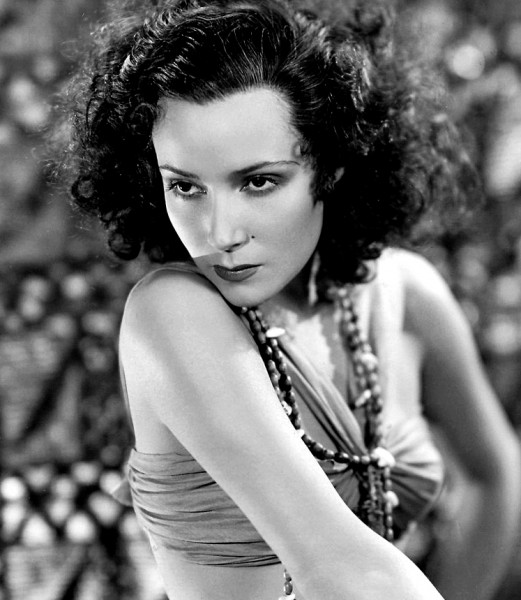
Dolores del Río ([doˈloɾes del ˈrio]; born María de los Dolores Asúnsolo López-Negrete (August 3, 1905 – April 11, 1983), was a Mexican film, television and stage actress. She was a Hollywood star in the 1920s and 1930s, and one of the most important female figures of the Golden Age of Mexican cinema in the 1940s and 1950s.
Dolores del Río was the first major Latina cross-over star in Hollywood., and was considered by critics and film historians, one of the most beautiful faces that have emerged in the Hollywood cinema.
With the passage of time, and even after her death, her physical characteristics and her lead role and influence as a Latin American female figure in the international cinema, have made her into an object of worship and veneration of the cultural, artistic and cinematographic circles of Mexico and other countries.
After being discovered in Mexico by the filmmaker Edwin Carewe, Dolores began her film career in 1925. In the last years of the American silent cinema, Dolores came to be considered a sort of female version of Rudolph Valentino, a "female Latin Lover" She had roles in a series of successful silent films like What Price Glory? (1926), Resurrection (1927) and Ramona (1928). With the advent of sound, she acted films like Bird of Paradise (1932), Flying Down to Rio (1933), Madame Du Barry (1934) and Journey into Fear (1943).
In the early 1940s, when her Hollywood career began to decline, del Río returned to Mexico and joined the Mexican film industry, which at that time was at its peak.
When del Río returned to her native country, she became one of the most important promoters and stars of the called Golden Age of Mexican cinema. A series of films including Flor silvestre (1943), María Candelaria (1943), Las Abandonadas (1944), Bugambilia (1944) and La Malquerida (1949), are considered classic masterpieces and they helped boost Mexican cinema worldwide. Del Río remained in force in the cinema of her native country for the next three decades and only returned to Hollywood sporadically. Her long career also spanned theater and television.
Months later, Dolores received an urgent telegram informing her of Jaime’s illness in Germany. However, by the time she received the news, he was already dead. Some rumors were that it was suicide by poison.
From 1930 to 1940 Dolores was married to the Art Designer at MGM, Cedric Gibbons, one of the most influential men in the Hollywood industry, who had created the glistening "white room" sets featured in nearly all of MGM's prestige pictures. The Gibbons-Del Rio couple came to be considered one of the social hubs of Hollywood in the early 1930s. They organized Sunday lunches at his home, a spectacular Art Deco mansion considered one of the most glamorous and modern among the Hollywood stars. The mansion was designed by Rudolf Schindler. Among their frequent guests were Greta Garbo, Errol Flynn, Fay Wray, Constance Bennett and Marlene Dietrich. In the late thirties, Gibbons's professional commitments caused a rift between the couple. In 1938 Dolores met and fell in love with Orson Welles. She sought a divorce from Gibbons in 1940.
Dolores attended a party given by Jack L. Warner, where she met Orson Welles and fell completely under his spell. Ten years younger than del Río, Welles had been in love with her ever since seeing Bird of Paradise when he was 17 years old. At first, their relationship was very discreet and they did not appear alone in public. They were accompanied by Charles Chaplin or Marlene Dietrich, who were friends of both. Dolores moved out of Gibbons house and asked for a divorce in March 1940.
Her relationship of four years with Welles came to an end in 1943 because of, among other things, the infidelities of Welles. Del Río returned to México in 1943, and Welles married Rita Hayworth (who was already called in Hollywood "the new Dolores del Rio") shortly after.
Welles was reunited with Dolores during a visit to Mexico in 1946, where he told her that his marriage to Hayworth was totally unhappy. However, Dolores only offered her support and a sincere friendship.
In 1954 Rebecca Welles, the daughter of Welles and Hayworth, traveled to Mexico with the intention of meeting Dolores. Dolores received her kindly at her home in Acapulco, where the young girl celebrated her 18th birthday. Rebecca said shortly after their meeting: "My father considered this woman as the great love of his life. She was a sort of living legend in the history of my family". According to Rebecca, her father had an obsession for Dolores until the end of his life. He took Dolores look-alikes as his third wife and as his final lover. Years later Rita Hayworth and Dolores were reunited at an event and Hayworth publicly thanked the great details that del Río had with her daughter.
At different times in her life, del Río was also romantically linked to figures like the film director John Farrow, the actor Errol Flynn, the German writer Erich Maria Remarque, the Dominican playboy Porfirio Rubirosa, the Mexican film producer Archibaldo Burns and the Mexican actors Tito Junco and Fernando Casanova.
The Mexican film director Emilio Fernández, was one of Dolores' greatest admirers. He claimed that he appeared as an extra in several films with Dolores in Hollywood. The beauty and poise of the actress had deeply impressed him. Fernández said: She looked at me, but without seeing me. Curiously she ask me to direct her in her first film in Mexico. I fell in love with her, but she always ignored me. I adored her, really and seriously adored her. The film María Candelaria (1943) was written for Dolores by Fernández as a present for her 38th birthday. Fernandez pursued Dolores with lavish gifts. For months, he would surprise her daily with a small token of affection. When he could not afford jewelry, he sent crystal glasses with fireflies trapped inside. There were some rumors as to a romance between them, although none were verified.
In 1949, Dolores met the American millionaire, adventurer and theater producer Lewis A. Riley in Acapulco. Riley was known in Hollywood cinema in the forties for being a member of the Hollywood Canteen, an organization created by movie stars to support victims of World War II. At that time Riley was having a torrid affair with Bette Davis, who served as the image of the organization. Riley settled with his brother in Acapulco. After ten years together, Dolores and Riley were married in New York in 1959. Dolores remained attached to Riley until the end of her life.
The house of Dolores in México City, called "La Escondida" (localized in the popular neighborhood of Coyoacán), like her home in the port of Acapulco, were very popular with Mexican and foreign celebrities, such as Diego Rivera, Frida Kahlo, María Félix, Merle Oberon, John Wayne, Nancy Oakes, Luciana Pignatelli, Helen Hayes, Edgar Neville, Begum Om Habibeh Aga Khan, Nelson Rockefeller, the Prince Edward, Duke of Windsor and Wallis Simpson, Princess Soraya of Iran, and many more.
Many anecdotes exist about her rivalry with Lupe Vélez, another successful Mexican star in 1930s Hollywood. Del Rio never understood the struggle that Velez had with her, but avoided meeting her. She hated being imitated and ridiculed by the so-called Mexican Spitfire. One source of the rivalry was the well-respected public image of del Río; Vélez could not ignore this. Velez wore spectacular costumes, but never reached the supreme elegance of del Rio. Velez was popular and had many friends and admirers, but was never accepted by the Hollywood social circle where del Rio was accepted without reservation. Velez spoke ill of del Rio, but she was never publicly offensive. Obviously Vélez resented the success of del Rio during the years that both were in Hollywood.
The newspapers also speculated about a strong rivalry between Dolores and María Félix, the other diva of the Mexican Cinema. About this "rivalry" María Félix said in her autobiography: "With Dolores I don't have any rivalry. On the contrary. We were friends and we always treated each other with great respect. We were completely different. She refined, interesting, soft on the deal, and I'm more energetic, arrogant and bossy". María also said in another interview: "Dolores del Río was a Great Lady. A very intelligent and very funny woman. I loved her very much and I have great memories of her".
Source : Wikidata
Dolores del Río

Birth name María de los Dolores Asúnsolo López-Negrete
Nationality Mexique
Birth 3 august 1904 at Durango (Mexique)
Death 11 april 1983 (at 78 years) at Newport Beach (USA)
Nationality Mexique
Birth 3 august 1904 at Durango (Mexique)
Death 11 april 1983 (at 78 years) at Newport Beach (USA)
Dolores del Río ([doˈloɾes del ˈrio]; born María de los Dolores Asúnsolo López-Negrete (August 3, 1905 – April 11, 1983), was a Mexican film, television and stage actress. She was a Hollywood star in the 1920s and 1930s, and one of the most important female figures of the Golden Age of Mexican cinema in the 1940s and 1950s.
Dolores del Río was the first major Latina cross-over star in Hollywood., and was considered by critics and film historians, one of the most beautiful faces that have emerged in the Hollywood cinema.
With the passage of time, and even after her death, her physical characteristics and her lead role and influence as a Latin American female figure in the international cinema, have made her into an object of worship and veneration of the cultural, artistic and cinematographic circles of Mexico and other countries.
After being discovered in Mexico by the filmmaker Edwin Carewe, Dolores began her film career in 1925. In the last years of the American silent cinema, Dolores came to be considered a sort of female version of Rudolph Valentino, a "female Latin Lover" She had roles in a series of successful silent films like What Price Glory? (1926), Resurrection (1927) and Ramona (1928). With the advent of sound, she acted films like Bird of Paradise (1932), Flying Down to Rio (1933), Madame Du Barry (1934) and Journey into Fear (1943).
In the early 1940s, when her Hollywood career began to decline, del Río returned to Mexico and joined the Mexican film industry, which at that time was at its peak.
When del Río returned to her native country, she became one of the most important promoters and stars of the called Golden Age of Mexican cinema. A series of films including Flor silvestre (1943), María Candelaria (1943), Las Abandonadas (1944), Bugambilia (1944) and La Malquerida (1949), are considered classic masterpieces and they helped boost Mexican cinema worldwide. Del Río remained in force in the cinema of her native country for the next three decades and only returned to Hollywood sporadically. Her long career also spanned theater and television.
Biography
In 1921, del Río married Mexican socialite Jaime Martínez del Río, belonging to one of the most distinguished families in Mexico and several years older than her. Dolores fell pregnant in 1924, but suffered a miscarriage that led her not to try to get pregnant at risk of losing her life. Her marriage came to end in 1928 when del Río had achieved success in film. Her husband, unhappy with living in his wife’s shadow, left for New York where he planned to collaborate on a stage play. After the unfortunate failure of Jaime’s play in New York, he wrote that he wouldn't be returning to Los Angeles but would go to Europe instead. Dolores decided to get a divorce.Months later, Dolores received an urgent telegram informing her of Jaime’s illness in Germany. However, by the time she received the news, he was already dead. Some rumors were that it was suicide by poison.
From 1930 to 1940 Dolores was married to the Art Designer at MGM, Cedric Gibbons, one of the most influential men in the Hollywood industry, who had created the glistening "white room" sets featured in nearly all of MGM's prestige pictures. The Gibbons-Del Rio couple came to be considered one of the social hubs of Hollywood in the early 1930s. They organized Sunday lunches at his home, a spectacular Art Deco mansion considered one of the most glamorous and modern among the Hollywood stars. The mansion was designed by Rudolf Schindler. Among their frequent guests were Greta Garbo, Errol Flynn, Fay Wray, Constance Bennett and Marlene Dietrich. In the late thirties, Gibbons's professional commitments caused a rift between the couple. In 1938 Dolores met and fell in love with Orson Welles. She sought a divorce from Gibbons in 1940.
Dolores attended a party given by Jack L. Warner, where she met Orson Welles and fell completely under his spell. Ten years younger than del Río, Welles had been in love with her ever since seeing Bird of Paradise when he was 17 years old. At first, their relationship was very discreet and they did not appear alone in public. They were accompanied by Charles Chaplin or Marlene Dietrich, who were friends of both. Dolores moved out of Gibbons house and asked for a divorce in March 1940.
Her relationship of four years with Welles came to an end in 1943 because of, among other things, the infidelities of Welles. Del Río returned to México in 1943, and Welles married Rita Hayworth (who was already called in Hollywood "the new Dolores del Rio") shortly after.
Welles was reunited with Dolores during a visit to Mexico in 1946, where he told her that his marriage to Hayworth was totally unhappy. However, Dolores only offered her support and a sincere friendship.
In 1954 Rebecca Welles, the daughter of Welles and Hayworth, traveled to Mexico with the intention of meeting Dolores. Dolores received her kindly at her home in Acapulco, where the young girl celebrated her 18th birthday. Rebecca said shortly after their meeting: "My father considered this woman as the great love of his life. She was a sort of living legend in the history of my family". According to Rebecca, her father had an obsession for Dolores until the end of his life. He took Dolores look-alikes as his third wife and as his final lover. Years later Rita Hayworth and Dolores were reunited at an event and Hayworth publicly thanked the great details that del Río had with her daughter.
At different times in her life, del Río was also romantically linked to figures like the film director John Farrow, the actor Errol Flynn, the German writer Erich Maria Remarque, the Dominican playboy Porfirio Rubirosa, the Mexican film producer Archibaldo Burns and the Mexican actors Tito Junco and Fernando Casanova.
The Mexican film director Emilio Fernández, was one of Dolores' greatest admirers. He claimed that he appeared as an extra in several films with Dolores in Hollywood. The beauty and poise of the actress had deeply impressed him. Fernández said: She looked at me, but without seeing me. Curiously she ask me to direct her in her first film in Mexico. I fell in love with her, but she always ignored me. I adored her, really and seriously adored her. The film María Candelaria (1943) was written for Dolores by Fernández as a present for her 38th birthday. Fernandez pursued Dolores with lavish gifts. For months, he would surprise her daily with a small token of affection. When he could not afford jewelry, he sent crystal glasses with fireflies trapped inside. There were some rumors as to a romance between them, although none were verified.
In 1949, Dolores met the American millionaire, adventurer and theater producer Lewis A. Riley in Acapulco. Riley was known in Hollywood cinema in the forties for being a member of the Hollywood Canteen, an organization created by movie stars to support victims of World War II. At that time Riley was having a torrid affair with Bette Davis, who served as the image of the organization. Riley settled with his brother in Acapulco. After ten years together, Dolores and Riley were married in New York in 1959. Dolores remained attached to Riley until the end of her life.
The house of Dolores in México City, called "La Escondida" (localized in the popular neighborhood of Coyoacán), like her home in the port of Acapulco, were very popular with Mexican and foreign celebrities, such as Diego Rivera, Frida Kahlo, María Félix, Merle Oberon, John Wayne, Nancy Oakes, Luciana Pignatelli, Helen Hayes, Edgar Neville, Begum Om Habibeh Aga Khan, Nelson Rockefeller, the Prince Edward, Duke of Windsor and Wallis Simpson, Princess Soraya of Iran, and many more.
Many anecdotes exist about her rivalry with Lupe Vélez, another successful Mexican star in 1930s Hollywood. Del Rio never understood the struggle that Velez had with her, but avoided meeting her. She hated being imitated and ridiculed by the so-called Mexican Spitfire. One source of the rivalry was the well-respected public image of del Río; Vélez could not ignore this. Velez wore spectacular costumes, but never reached the supreme elegance of del Rio. Velez was popular and had many friends and admirers, but was never accepted by the Hollywood social circle where del Rio was accepted without reservation. Velez spoke ill of del Rio, but she was never publicly offensive. Obviously Vélez resented the success of del Rio during the years that both were in Hollywood.
The newspapers also speculated about a strong rivalry between Dolores and María Félix, the other diva of the Mexican Cinema. About this "rivalry" María Félix said in her autobiography: "With Dolores I don't have any rivalry. On the contrary. We were friends and we always treated each other with great respect. We were completely different. She refined, interesting, soft on the deal, and I'm more energetic, arrogant and bossy". María also said in another interview: "Dolores del Río was a Great Lady. A very intelligent and very funny woman. I loved her very much and I have great memories of her".
Usually with
Filmography of Dolores del Río (52 films)
Actress

Zelig (1983)
, 1h19Directed by Woody Allen
Origin USA
Genres Comedy, Documentary, Romance
Themes Political films
Actors Mia Farrow, Woody Allen, Susan Sontag, Caitlin O'Heaney, Patrick Horgan, Joséphine Baker
Roles Self (archive footage) (uncredited)
Rating76%





Set in the 1920s and 1930s, the film focuses on Leonard Zelig (Woody Allen), a nondescript man who has the ability to transform his appearance to that of the people who surround him. He is first observed at a party by F. Scott Fitzgerald, who notes that Zelig related to the affluent guests in a thick, refined accent and shared their Republican sympathies, but while in the kitchen with the servants he adopted a ruder tone, and seemed to be more of a Democrat. He soon gains international fame as a "human chameleon".
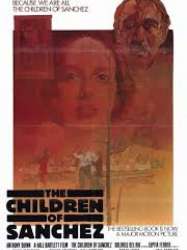
The Children of Sanchez (1978)
, 2h6Directed by Hall Bartlett
Origin USA
Genres Drama
Actors Anthony Quinn, Lupita Ferrer, Katy Jurado, Dolores del Río, Stathis Giallelis, Héctor Bonilla
Roles Grandma Paquita
Rating60%





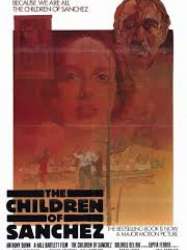
The Children of Sanchez (1978)
, 2h6Directed by Hall Bartlett
Origin USA
Genres Drama
Actors Anthony Quinn, Lupita Ferrer, Katy Jurado, Helena Rojo, Dolores del Río, Patricia Reyes Spíndola
Roles Grandma Paquita
Rating60%





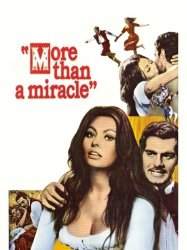
More Than a Miracle (1967)
, 1h44Directed by Francesco Rosi
Origin Italie
Genres Comedy, Romantic comedy, Fantasy, Romance
Actors Omar Sharif, Sophia Loren, Georges Wilson, Leslie French, Dolores del Río, Marina Malfatti
Roles Reine Mère
Rating59%





The film recounts the misadventures of a beautiful and temperamental Neapolitan village girl Isabella (Sophia Loren) and an ill-tempered Spanish prince, Rodrigo (Omar Sharif). The prince was a risk taker, avoiding his parents' wishes for him to marry. One day while riding a horse in the countryside, he becomes distracted by a noise and sees someone flying across the sky! This person predicts his future and gives him a donkey to take him in the right direction if he pats its back and feeds him flour. On the way back, he meets Isabella. He is very much attracted to her, but she rejects him.
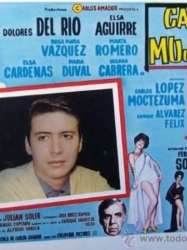
House of Women (1966)
, 1h40Directed by Julián Soler
Genres Drama
Actors Dolores del Río, Elsa Aguirre, Fernando Soler, Enrique Álvarez Félix, Elsa Cárdenas, Rosa María Vázquez
Roles Hilda Moreno
Rating61%





At a Christmas party, the women of a luxurious brothel, find a baby abandoned on their doorstep. After discussion, all decide to take the baby as their "mothers" and decide to reform.

Cheyenne Autumn (1964)
, 2h34Directed by John Ford
Origin USA
Genres Drama, Action, Western
Actors Richard Widmark, Carroll Baker, James Stewart, Dolores del Río, Edward G. Robinson, Karl Malden
Roles Spanish woman
Rating66%





In 1878, Chiefs Little Wolf (Ricardo Montalban) and Dull Knife (Gilbert Roland) led over three hundred starved and weary Cheyenne from their reservation in the Oklahoma territory to their traditional home in Wyoming. The US government sees this as an act of rebellion, and the sympathetic Captain Thomas Archer (Richard Widmark) is forced to lead his troops in an attempt to stop the tribe. As the press misrepresents the natives' motives and goals for their trek as malicious, Secretary of the Interior Carl Schurz (Edward G. Robinson) tries to prevent violence from erupting between the army and the natives. Also featured are James Stewart as Wyatt Earp, Dolores del Río as "Spanish Woman" and Carroll Baker as a pacifist Quaker school teacher and Archer's love interest.
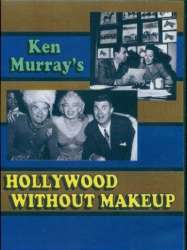
Hollywood Without Make-Up (1963)
Directed by Ken Murray
Origin USA
Genres Documentary
Themes Documentary films about business, Documentary films about the film industry, Documentary films about cities
Actors Kirk Douglas, Ken Murray, Cary Grant, June Allyson, George K. Arthur, Eddie Albert
Roles Self (archive footage)
Rating71%





The film consists of archive footage of famous Hollywood stars, mostly home movies showing the stars as themselves instead of playing a role in front of the camera.
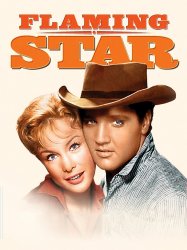
Flaming Star (1960)
, 1h41Directed by Don Siegel, Michael D. Moore, Richard Talmadge
Origin USA
Genres Drama, Action, Romance, Western
Themes Children's films
Actors Elvis Presley, Barbara Eden, Dolores del Río, Steve Forrest, Rodolfo Acosta, John McIntire
Roles Neddy Burton
Rating64%





Elvis Presley plays Pacer Burton, the son of a Kiowa mother and a Texan father working as a rancher. His family, including a half-brother, Clint, live a typical life on the Texan frontier. Life becomes anything but typical when a nearby tribe of Kiowa begin raiding neighboring homesteads. Pacer soon finds himself caught between the two worlds, part of both but belonging to neither.

The Soldiers of Pancho Villa (1959)
, 1h37Directed by Ismael Rodríguez
Origin Mexique
Genres Drama, War, Romance
Themes Political films
Actors María Félix, Dolores del Río, Emilio Fernández, Antonio Aguilar, Flor Silvestre, Pedro Armendáriz
Roles Isabel Puente
Rating70%





When the Mexican Revolution was exploding, there was a woman who made history, her name was "La Cucaracha" (María Félix). Her great passion was the Revolution, but her downfall was a man: Colonel Antonio Zeta (Emilio Fernández), who has eyes for another woman, Isabel, the widow (Dolores del Río). The rivalry between both women explodes.

Torero! (1957)
, 1h15Directed by Carlos Velo, Carlos Velo
Origin Mexique
Genres Drama, Documentary
Themes Films about animals, Sports films, Bullfighting films
Actors Dolores del Río, Miroslava
Roles Guest
Rating76%





Luis Procuna est un grand matador mexicain. Il souhaite se retirer et vivre en toute quiétude auprès de son épouse. Mais le public exige qu'il remonte sur l'arène... Sur le chemin le menant au combat, le torero se souvient des instants passés et confie sa hantise de la mort.
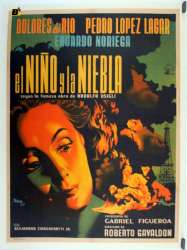
The Boy and the Fog (1953)
, 1h51Directed by Roberto Gavaldón
Genres Drama
Actors Dolores del Río, Alejandro Ciangherotti, Pedro López Lagar, Miguel Ángel Ferriz, Eduardo Noriega, Carlos Riquelme
Roles Marta
Rating70%





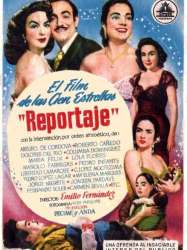
Reportaje (1953)
, 1h43Directed by Emilio Fernández
Genres Drama, Comedy
Actors Pedro Infante, Jorge Negrete, María Félix, Roberto Cañedo, Dolores del Río, Miguel Ángel Ferriz
Roles María Cristina
Rating69%





The owner of a daily paper wants to find the most important news on New Year's Eve. Therefore he decides to send his top reporters to strategic points in Mexico City.
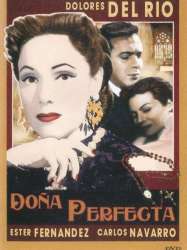
Doña Perfecta (1951)
, 1h37Genres Drama, War, Romance
Actors Dolores del Río, Esther Fernández, José Elías Moreno, Julio Villarreal
Roles Doña Perfecta
Rating71%





The action occurs in 19th century México, when a young liberal named Don José (Pepe) Rey, arrives in a city, with the intention of marrying his cousin Rosario. This was a marriage of convenience arranged between Pepe's father Juan and Juan's sister, Perfecta (Dolores del Río).
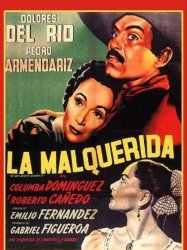
La Malquerida (1949)
, 1h26Directed by Emilio Fernández
Origin Mexique
Genres Drama
Actors Dolores del Río, Pedro Armendáriz, Columba Domínguez, Roberto Cañedo, Julio Villarreal, Carlos Riquelme
Roles Raimunda
Rating71%





In the ranch of El Soto lives Raymunda (Dolores del Río) and her daughter, Acacia (Columba Domínguez). After she is widowed, Raymunda marries Esteban (Pedro Armendáriz). What Raymunda does not suspect is that a deep passion has arisen between Acacia and Esteban. The misfortune is that the men who approach Acacia have a tragic end, and because of this, they begin to call her "La Malquerida" ("The Unloved").

The Loves of Carmen (1948)
, 1h39Directed by Charles Vidor, Earl Bellamy
Origin USA
Genres Drama, Romance
Themes Films about animals, Sports films, Bullfighting films
Actors Rita Hayworth, Glenn Ford, Victor Jory, Luther Adler, Margaret Wycherly, Ron Randell
Roles Carmen
Rating61%





Following the plot of the classic opera, "Carmen," this story follows the wild gypsy's adventures as a siren and bandit. Carmen (Rita Hayworth) lures an innocent soldier (Glenn Ford) to his ruin, getting him expelled from the army. He then turns to banditry, killing Carmen's husband (Victor Jory) and others. The drama culminates in an ending with the innocent soldier repenting of his sins and dying.
 Connection
Connection




